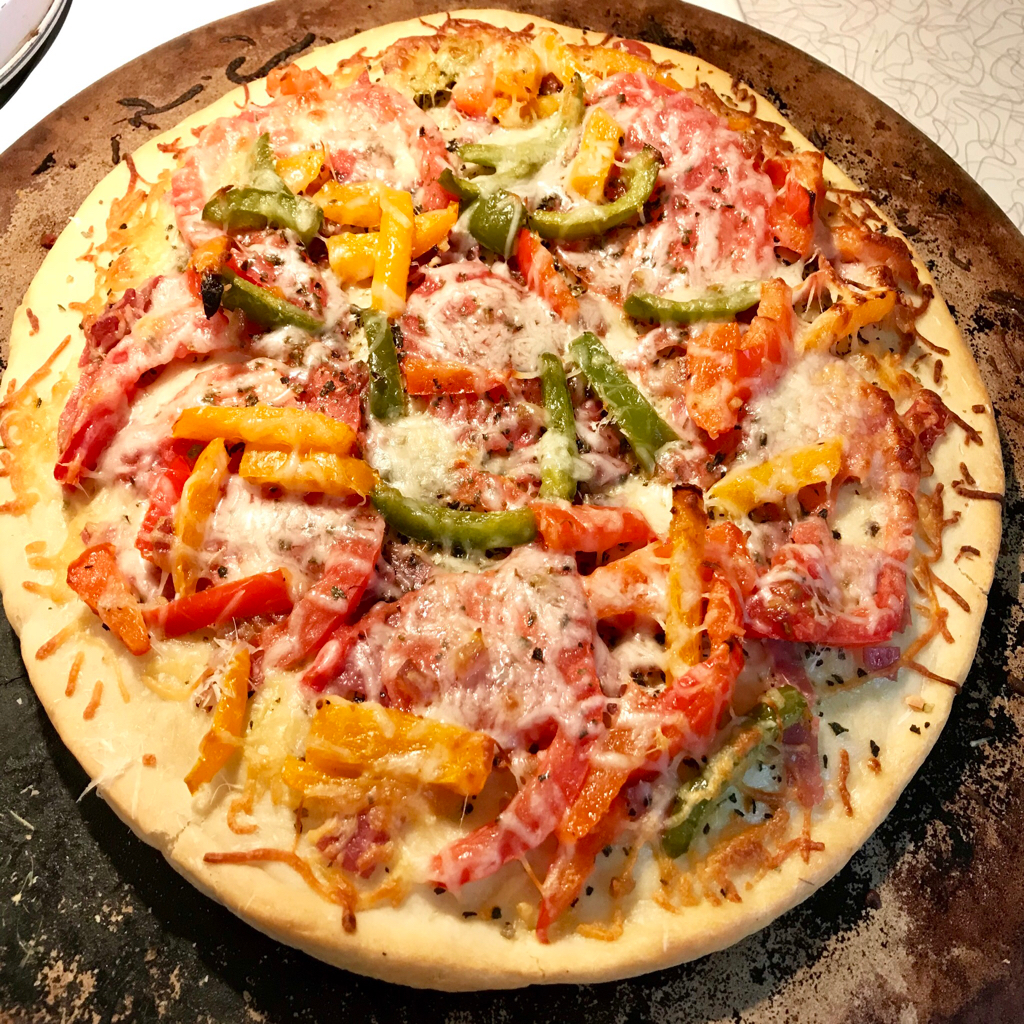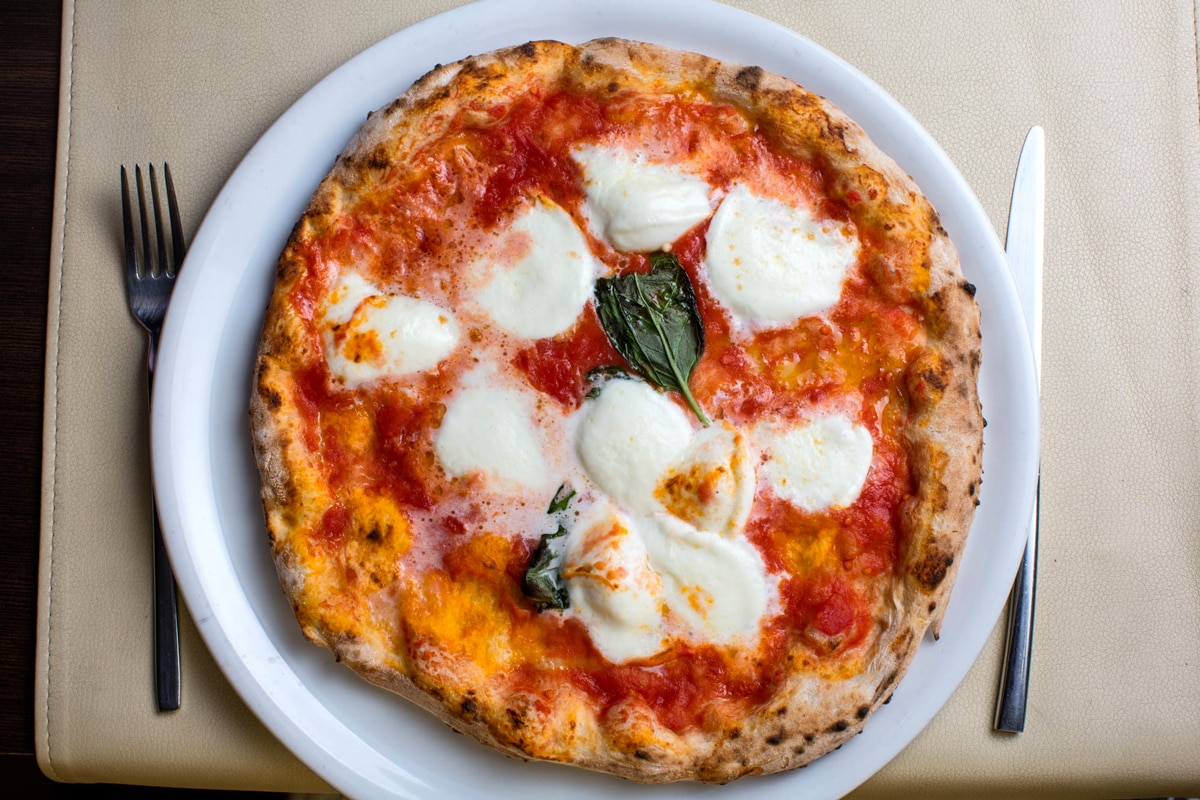Pizza, a beloved culinary delight, has captured the hearts and taste buds of food enthusiasts worldwide. Its origins, rooted in the vibrant streets of Naples, Italy, have given rise to a rich tapestry of flavors and techniques that have been passed down through generations.
In this comprehensive guide, we will delve into the art of crafting authentic Italian pizza, exploring the history, ingredients, techniques, and variations that make this dish a true masterpiece. From the perfect dough to the delectable toppings, we will uncover the secrets that elevate pizza beyond a mere meal to an unforgettable culinary experience.
History of Authentic Italian Pizza

The origins of pizza can be traced back to ancient times, with the first known pizzas being made in Naples, Italy, in the 18th century. These early pizzas were simple flatbreads topped with tomatoes, cheese, and herbs, and were typically cooked in a wood-fired oven.
Over time, pizza became increasingly popular throughout Italy, and regional variations began to emerge. Today, there are many different types of pizza, each with its own unique toppings and flavors.
Pizza has always been an important part of Italian culture. It is a symbol of family and friendship, and is often served at gatherings and celebrations. Pizza is also a popular street food, and can be found in pizzerias and restaurants all over Italy.
Regional Variations of Pizza
There are many different regional variations of pizza in Italy, each with its own unique toppings and flavors. Some of the most popular regional pizzas include:
- Pizza Margherita: This is the classic Neapolitan pizza, made with tomatoes, mozzarella cheese, and basil.
- Pizza Marinara: This pizza is made with tomatoes, garlic, oregano, and olive oil.
- Pizza Romana: This pizza is made with a thin, crispy crust and is typically topped with mozzarella cheese, tomatoes, and prosciutto.
- Pizza Siciliana: This pizza is made with a thick, focaccia-like crust and is typically topped with tomatoes, mozzarella cheese, and anchovies.
Ingredients and Techniques
Authentic Italian pizza is characterized by its distinct ingredients and preparation techniques. These elements combine to create a harmonious balance of flavors and textures that sets it apart from other pizza styles.
The essential ingredients of authentic Italian pizza include:
- Flour: High-quality “00” flour is finely ground and gives the pizza dough its characteristic elasticity and crispiness.
- Tomatoes: San Marzano tomatoes are the preferred choice for their rich, sweet flavor and low acidity.
- Cheese: Mozzarella di bufala, made from water buffalo milk, is the traditional cheese used for its creamy texture and delicate flavor.
- Toppings: Classic toppings include fresh basil, oregano, and cured meats like prosciutto or pepperoni.
Preparing the Dough
The dough is the foundation of a great pizza. It is made with a mixture of flour, water, yeast, and salt. The ingredients are combined and kneaded until the dough becomes smooth and elastic. The dough is then left to rise for several hours, allowing the yeast to ferment and create a light and airy texture.
Making the Sauce
The sauce is the heart of the pizza. It is made with tomatoes, onions, garlic, and herbs. The tomatoes are cooked down until they are thick and flavorful. The onions and garlic add sweetness and depth of flavor. The herbs, such as basil and oregano, add a fresh and aromatic touch.
Assembling the Pizza
Once the dough and sauce are ready, it is time to assemble the pizza. The dough is stretched out into a thin circle and placed on a lightly oiled baking sheet. The sauce is then spread over the dough, followed by the cheese and toppings.
The pizza is then baked in a hot oven until the crust is golden brown and the cheese is melted and bubbly.
Types of Authentic Italian Pizza
The world of authentic Italian pizza is a diverse and delicious one, with countless variations to choose from. Here’s a table comparing three of the most popular types:
| Type | Unique Characteristics | Ingredients | Regional Origin |
|---|---|---|---|
| Margherita | Simple yet flavorful, with a thin, crispy crust, tangy tomato sauce, and fresh mozzarella cheese. | Tomato sauce, mozzarella cheese, fresh basil | Naples, Italy |
| Marinara | A seafood-lover’s delight, with a rich tomato sauce topped with fresh seafood, such as mussels, clams, and shrimp. | Tomato sauce, seafood, garlic, oregano | Naples, Italy |
| Neapolitan | A UNESCO-protected delicacy, with a soft, chewy crust, light tomato sauce, and fresh mozzarella cheese. | Tomato sauce, mozzarella cheese, fresh basil | Naples, Italy |
Pizza Ovens and Equipment
Authentic Italian pizza requires specialized equipment to achieve its characteristic texture and flavor. The most important aspect is the oven, as the high temperatures and unique cooking environment are essential for creating the perfect pizza.
Types of Pizza Ovens
There are two main types of ovens used for making authentic Italian pizza:
- Wood-fired ovens: These ovens are the traditional method of cooking pizza and provide the most authentic flavor. They burn wood to create intense heat, which cooks the pizza quickly and evenly, resulting in a crispy crust and chewy interior.
- Electric ovens: Electric ovens are more common for home use and are a good option for those who do not have access to a wood-fired oven. They provide consistent heat, making them easier to control than wood-fired ovens, but they may not produce the same level of flavor.
Essential Equipment and Tools
In addition to the oven, there are several essential equipment and tools that are needed for making authentic Italian pizza:
- Pizza stone: A pizza stone is a flat, heat-resistant surface that is placed in the oven to create a cooking surface that mimics the heat retention of a wood-fired oven.
- Pizza peel: A pizza peel is a long, flat paddle that is used to transfer the pizza to and from the oven. It is important to have a pizza peel that is large enough to accommodate the size of the pizza you are making.
- Pizza cutter: A pizza cutter is a sharp, round blade that is used to cut the pizza into slices.
Cooking Techniques and Troubleshooting
Mastering the art of pizza-making requires meticulous attention to cooking techniques. From achieving the perfect crust to evenly distributing toppings, this section will delve into the nuances of pizza preparation and offer troubleshooting tips for common challenges.
To achieve a crispy, golden-brown crust, preheat the oven to the highest temperature possible (ideally around 500°F or 260°C). Use a pizza stone or baking sheet to ensure even heat distribution. Place the pizza on the preheated surface and bake for 10-15 minutes, or until the crust is cooked through and the cheese is melted and bubbly.
Toppings Distribution
For optimal flavor and texture, toppings should be evenly distributed across the pizza. Start by spreading a thin layer of sauce over the crust, leaving a 1-inch border around the edges. Add your desired toppings, ensuring that they are not piled too high, as this can prevent the crust from cooking evenly.
Use a light hand when adding cheese, as too much can result in a soggy crust.
Troubleshooting
Problem: Soggy Crust
- Possible Cause: Undercooked dough or excessive toppings.
- Solution: Pre-bake the dough for a few minutes before adding toppings, and avoid overloading the pizza with ingredients.
Problem: Burnt Crust and Undercooked Toppings
- Possible Cause: Oven temperature too high.
- Solution: Reduce the oven temperature and cook the pizza for a longer period.
Problem: Unevenly Cooked Pizza
- Possible Cause: Improper heat distribution.
- Solution: Use a pizza stone or baking sheet to ensure even heat distribution, and rotate the pizza halfway through the cooking process.
Pairing Pizza with Wine and Sides

Pizza, with its diverse flavors and textures, offers a delightful opportunity to explore pairings with both wine and side dishes. Understanding these pairings can elevate the pizza experience, enhancing the enjoyment of both the pizza and its accompaniments.
Wine Pairings
Selecting the right wine to complement pizza depends on the type of pizza and its toppings. For classic Margherita pizzas, a light-bodied red wine like Pinot Noir or Barbera provides a balanced acidity and fruity notes that complement the tomato sauce and cheese.
White pizzas with creamy sauces pair well with crisp white wines such as Sauvignon Blanc or Pinot Grigio, which bring out the flavors of the sauce and toppings. For pizzas with spicy toppings, such as pepperoni or jalapeños, a fuller-bodied red wine like Cabernet Sauvignon or Zinfandel can stand up to the heat and richness.
Side Dishes
Side dishes can enhance the pizza experience by adding variety, texture, and flavor. Salads, with their fresh greens and vegetables, provide a refreshing contrast to the richness of pizza. A classic Caesar salad or a Caprese salad with ripe tomatoes and fresh mozzarella offer a light and tangy accompaniment.
For a heartier side, roasted vegetables, such as broccoli, zucchini, or bell peppers, add a flavorful and colorful addition to the meal. Breadsticks or garlic knots can also be served as a side, providing a crispy and savory option to complement the pizza.
Summary
As we conclude our exploration of authentic Italian pizza, we are left with a profound appreciation for the culinary artistry that has shaped this iconic dish. From the humble beginnings in Naples to its global recognition, pizza has become a symbol of Italian heritage and a testament to the enduring power of culinary traditions.
Whether you are a seasoned pizzaiolo or a home cook seeking to recreate the magic of Italy in your kitchen, this guide has equipped you with the knowledge and techniques to craft exceptional pizzas that will tantalize your taste buds and leave a lasting impression on your dining companions.
Frequently Asked Questions
What is the secret to achieving a perfectly crispy pizza crust?
The key to a crispy crust lies in the dough’s hydration level and cooking temperature. Using a high-quality flour with a strong gluten content and maintaining a low hydration level (around 60-65%) will result in a dough that is easy to handle and will crisp up beautifully in the oven.
Additionally, baking the pizza at a high temperature (around 450°C or 840°F) for a short period will create a crispy exterior while ensuring a tender and flavorful interior.
What are the essential toppings for an authentic Italian pizza?
While there are countless variations of Italian pizza, some toppings are considered essential. San Marzano tomatoes, known for their rich flavor and low acidity, form the base of a classic tomato sauce. Fresh mozzarella cheese, with its milky and slightly tangy taste, is a staple topping.
Additionally, basil, oregano, and extra virgin olive oil add aromatic and flavorful accents that complete the authentic Italian pizza experience.
Can I use a regular oven to make authentic Italian pizza?
While a wood-fired oven is the traditional method for cooking Italian pizza, it is possible to achieve excellent results using a regular oven. Preheat your oven to the highest temperature possible (around 250-300°C or 480-570°F) and use a pizza stone or baking sheet to create a hot surface for the pizza.
Bake the pizza for a shorter amount of time (around 10-12 minutes) to prevent overcooking and ensure a crispy crust.
